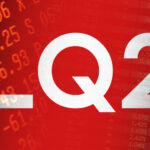August 17 – Reuters Breakingviews (Edward Chancellor): “Financial markets, like religions, are faith-based networks. The complex structures of assets and liabilities that comprise markets are held together by a set of underlying beliefs. Unlike religions, however, financial dogmas are occasionally shown to be false. We experienced such a moment last week, when the Chinese authorities chose to devalue their currency.”
Contemporary global finance is a complex “system” of interwoven (electronic) “faith-based networks.” As the bursting of the global Bubble unfolds, myriad “financial dogmas” will be exposed as bogus. Too many have been little more than chicanery.
For the most part, global finance is comprised of a labyrinth of IOUs. And IOU value hinges on confidence, faith and trust. Over recent years too much of global finance has been underpinned – directly and indirectly – by concerted efforts of the world’s central bankers. Trillions of newly minted government finance have been validating tens of Trillions more of private-sector obligations and asset prices. Now, faith in the almighty power of central bank Credit and fiscal deficits, unquestioned for far too long, has begun to dim. The unfolding global crisis of confidence expanded and accelerated this week.
Global financial tumult has now attained sufficient momentum so that even U.S. markets can no longer remain comfortably oblivious. Yet, for most in the U.S. there remains little worry: the economy is sound, housing is booming, Silicon Valley is heroic, the banking system is rock solid, and the corporate sector is awash in cash. The U.S. economy is viewed as insignificantly exposed to China’s economic slowdown – and to global issues for the most part. Analysts speak of a “normal” stock market pullback – yet another buying opportunity. There is, however, little normal about current global financial, economic and geopolitical backdrops.
The last seven years have witnessed unprecedented EM debt expansion, led by what should be a frightening ballooning of Chinese Credit. In particular, Chinese and EM banks have coalesced into historic lending growth and balance sheet (assets and liabilities) expansion. This week saw indications of what has the potential to erupt into an Asian and EM banking system crisis of confidence. Faith that Chinese and EM government officials have the situation under control is surely being shaken. This is a game-changer for global finance and for the world economy. Financial conditions are tightening around the world – and this has zero to do with a possible September Fed (“baby step”) rate increase.
According to SNL Financial, Chinese banks now hold four of the top five spots on the list of the world’s largest banks. Pulling data from year-end 2014 balance sheets, the big four Chinese banks – Industrial & Commercial Bank of China, China Construction Bank, Agricultural Bank of China and Bank of China – ended 2014 with assets of 87.59 TN yuan, or $13.7 TN. China’s big four saw combined Total Assets expand 64% in four years, with Loans up 80%. Estimates place total China banking system assets at $172 TN yuan to end 2014, or about $27 TN at today’s exchange rate. Since the end of 2008, banking assets have swelled 175%. Estimates show “shadow banking” assets having ballooned to the neighborhood of $5.0 TN. A bursting Chinese Super Bubble is a systemic issue – for the global economy, for global markets and for global finance. Rather quickly, China’s $3.7 TN international reserve position doesn’t seem as all-powerful.
August 20 – Reuters (Shu Zhang and Matthew Miller): “A mini debt crisis in northern China is exposing cracks in a financial pillar of the country’s economic revival plan: the $430 billion loan-guarantee industry. China has a heavy corporate debt burden and its economy is slowing, putting borrowers under strain, but many lenders take comfort from the fact that their loans are insured against default through the nation’s almost 8,000 guarantee companies. A third of these are state-backed companies that stand behind more than 60% of China’s guaranteed loans. They exist to facilitate finance for smaller businesses – China’s job-creators – but a crisis unfolding in northern Hebei province shows that their ability to meet those guarantees is in doubt. In Hebei, a gritty region of steel mills and factories close to the capital Beijing, one such company is technically insolvent, a fate likely shared by other guarantee firms as the world’s second-largest economy rapidly loses momentum. Hebei Financing Investment Guarantee Group has sold too many guarantees, too cheaply, on loans that have now gone sour. ‘The domestic financing guarantee model is a very bad one,’ said Hebei Financing general manager Ma Guobin.”
The proliferation of sophisticated financial structures, derivatives, speculative leveraging and Credit “insurance” in China and throughout EM is quickly evolving into a market issue. I recall only a few years back debating the fundamentals of Spanish sovereign debt. The sanguine view focused on relatively low debt-to-GDP. An opposing viewpoint factored in the major increase in government debt that would accompany the recapitalization of an impaired banking system. The bursting Chinese Bubble will exert great pressure on the Chinese central government and central bank.
As an analyst of Credit and (serial) Bubbles going back 25 years, there’s a recurring theme that is especially pertinent these days. Financial and economic Bubbles invariably prove much more resilient than Bubble analysts presume. And, at the end of the day, the excesses and consequences go beyond what even the hardcore “bears” could anticipate. The adage around our office became: “It’s Always Worse Than You Think.”
I expected a reversal of “hot money” flows and leverage that flowed freely into Mexico in the early-nineties to end in financial turmoil. The Mexican collapse unearthed excesses even worse than assumed. I fully expected the Asian Tiger Bubbles to implode. That fiasco proved much worse than anticipated. I saw the 1998 crisis coming. I knew major speculative excess had set the stage for financial dislocation. Yet I was shocked to learn of the egregious leverage employed by what was at the time one of the world’s most respected hedge fund complexes (LTCM). I knew Argentina was in trouble in 2000, but things were much more fragile than anticipated. I was confident that the mortgage finance Bubble would burst with devastating consequences. But, once again, boom-time excesses and shenanigans proved beyond even my hardcore (“wacko”) bearish expectations.
I really fear for the unwind of the “global government finance Bubble” – the grand finale of a multi-decade period of serial Bubbles. It’s history’s first systemic global Bubble, encompassing the world’s Credit systems, securities markets and monetary systems more generally. Excesses have engulfed the heart of “money” and Credit throughout both the “developing” and “developed” world. Central banks (of all stripes) have printed Trillions of “money” and Trillions more have been created in the process of leveraging securities and other assets. This type of monetary inflation invariably incentivizes destabilizing speculation, fraud, malfeasance and wealth redistribution. It’s fomented a geopolitical tinderbox.
I allow my mind to imagine the type and poor quality of assets on (bloated) Chinese, Brazilian, Russian, Asian and EM bank balance sheets – yet it’s surely a lot worse. I ponder how desperate governments will use their state directed lenders to stimulate and obfuscate – and then I contemplate the scope of future government bailouts. On a global basis, I believe there is today more speculative leverage in global currencies and securities markets than ever – and I fear my bearish imagination might only scratch the surface. There have been too many years of financial manipulation, innovation, experimentation and exploitation – on an unprecedented globalized scale.
To be sure, the past three years of global do “whatever it takes” central banking exacerbated “Terminal Phase” excess virtually everywhere. Central bank mores, practices and principles – tested and trusted over generations – were handily discarded in favor of New Age experimental monetary inflation. Speculative markets reveled accordingly.
Excesses throughout China, global equities, European bonds, U.S. equities, corporate Credit and M&A turned conspicuous. What’s not clear is the amount of global “carry trade” leverage; the types of derivatives-related leverage and associated fragilities; and the scope of excesses throughout global Credit and market “insurance.” There is anecdotal evidence of historic movements of “hot money” throughout global markets. What are the latent risks associated with self-reinforcing selling pressure – from trend-following “hot money,” from the unwind of derivatives leverage, and from “dynamic trading” hedging strategies? Is there a global “portfolio insurance” problem where selling begets more demand for “insurance”/hedging and additional selling – across multi-asset classes, regions and global markets. No one has a grasp of potential ramifications.
This week saw the first serious cracks unfold in the global financial “system.” I was compelled to calculate this week’s stock price declines from SNL Financial’s list of the 10 largest global banks: 1) Industrial & Commercial Bank of China 6.1%; 2) China Construction Bank 6.9%; 3) Agricultural Bank of China 4.9%; 4) HSBC 6.6%; 5) Bank of China 6.1%; 6) JPMorgan Chase 6.2%; 7) BNP Paribas 4.4%; 8) Mitsubishi UFJ Financial Group 7.5%; 9) Bank of America 9.0%; and 10) Barclay’s 6.4%.
It’s worth noting that Hong Kong’s Hang Seng China H-Financials Index sank 8.2% this week, with double-digit declines from Ping An Insurance Group of China and Bank of East Asia. Asian financial hub Singapore saw its stock market under significant pressure, with the Straits Times Index sinking 4.6%. The major Singapore bank stocks were hit (DBS Bank 5.0%, OCBC Bank 6.8% and United Overseas Bank 7.1%).
The systemic nature of the unfolding global crisis turned coherent this week. Crude oil sank below $40, as energy-related debt came under greater selling pressure. Saudi Arabia (3-year high), Qatar and Bahrain all saw a meaningful increases in sovereign CDS. Here at home, energy-sector Credits were under further pressure. Contagion was given an extra thrust from “money” this week exiting corporate debt, EM and U.S. equities funds. Spreads widened significantly throughout corporate Credit. And the weaker the Credit the more intense the spread blowout. Indicative of serious “risk off” de-risking/de-leveraging momentum, the XBD equities Securities Broker/Dealer Index sank 7.1% this week.
August 20 – Reuters (Guillermo Parra-Bernal): “State-controlled Banco do Brasil SA will allocate part of an extra 9 billion reais ($2.6bn) in emergency credit to construction, farming and oil companies hamstrung by a souring economy… Brazil’s largest bank by assets will extend the loans to help suppliers of the nation’s largest companies retain staff… On Wednesday, Banco do Brasil agreed to increase its loan exposure to the nation’s largest companies by 15 billion reais, a sign that President Dilma Rousseff is again using state lenders to shore up Latin America’s largest economy.”
Brazil CDS rose to the highest level since 2009, as Banco do Brasil’s stock sank to multi-year lows. Colombia CDS rose to a four-year high. Malaysia CDS moved to the high since 2011. Importantly, as contagion hems in the “Core of the Periphery,” cracks widened this week as well in EM darling Mexico. The Mexican peso sank 3.7% to an all-time low versus the dollar. Mexican stocks were hit for 3.6%. The Colombian peso sank 3.8% and the Chilean peso fell 2.0%. The Russian ruble was slammed 6.5% to a record low. As political and social instabilities mount, the vulnerable Turkish lira sank 3% to a record low. Kazakhstan’s tenge collapsed almost 25% on Thursday’s devaluation.
With the “Periphery” in serious trouble, contagion has begun to afflict even the “Core of the Core.” U.S. financial stocks were hammered. The Nasdaq 100 sank 7.4%, quickly pushing 2015 returns negative. Everyone’s (Crowded) favorite “Fab Five” – Apple, Google, Amazon, Netflix and Facebook – were slammed. The Morgan Stanley High Tech Index dropped 7.1% and the Biotechs lost 6.6%. There was seemingly no place to hide – big cap, mid- or small – high beta or low – growth or “defensive.” The Transports fell 5.4% and Utilities dropped 5.2%. Media stocks had another rough week. Treasuries won big, as spreads widened throughout the Credit market.
Air is now streaming from European Bubbles. The beloved German DAX equities index was hammered 7.8%, with a two-week decline of 12%. France’s CAC 40 posted a two-week fall of 10%. This week saw Italian stocks drop 6.5%. Spanish stocks were down another 5.6%, having now given back all of what was recently a 13% 2015 gain. Portuguese 10-year bond yields jumped 20 bps, with spreads widening meaningfully across Europe’s periphery. Italian and Spanish spreads to German bunds widened 14 bps and 10 bps. The French to German spread widened seven bps. European junk bonds, an ECB-induced speculator favorite, were under pressure this week.
The leveraged speculators, having already struggled with energy, metals and commodities collapses, now seem upside down on a number of popular Crowded Trades. As de-risking/de-leveraging dynamics took hold, this week saw the yen jump 1.8% and the euro surge 2.5%. These are popular/Crowded “funding”/short/“carry trade” currencies, and this week’s gains provide an important indictor of financial contagion enclosing upon the Core. Gaining $46, Gold seems to be a prescription for what ails waning confidence in unfettered electronic global finance.
The global slowdown view received added confirmation this week. A weak Chinese PMI reading definitely supported the post-market Bubble economic downdraft thesis. The Tainjin explosion comes at an inopportune time for already waning confidence in Chinese policymaking. A big jump in the unemployment rate confirms Brazils now rapid economic deterioration. And, perhaps most troubling, North Korea mobilizing for war is evidence of the alarming deterioration of the geopolitical landscape. Ukraine is deteriorating. Unrest in Turkey is troubling. And, in a salient change, nervous markets now seem keen to pay attention.
For the Week:
The S&P500 lost 5.8% (down 4.3% y-t-d), and the Dow fell 5.8% (down 7.6%). The Utilities were hit 5.2% (down 5.5%). The Banks sank 6.7% (down 1.7%), and the Broker/Dealers were slammed 7.1% (down 4.9%). The Transports declined 5.4% (down 13.9%). The S&P 400 Midcaps lost 5.2% (down 2.0%), and the small cap Russell 2000 declined 4.3% (down 3.7%). The Nasdaq100 sank 7.4% (down 0.9%), and the Morgan Stanley High Tech index was hit 7.1% (down 1.7%). The Semiconductors were hammered 8.3% (down 15.8%). The Biotechs lost 6.6% (up 9.5%). With bullion jumping $46, the HUI gold index surged 8.8% (down 22.7%).
Three-month Treasury bill rates ended the week at two bps. Two-year government yields were down 10 bps to 0.62% (down 5bps y-t-d). Five-year T-note yields sank 17 bps to a four-month low 1.43% (down 22bps). Ten-year Treasury yields fell 15 bps to a four-month low 2.05% (down 12bps). Long bond yields declined 10 bps to 2.74% (down one basis point).
Japan’s Nikkei equities index sank 5.3% (up 11.4% y-t-d). Japanese 10-year “JGB” yields declined three bps to 0.35% (up 6bps y-t-d). The German DAX equities index was clobbered 7.8% (up 3.3%). Spain’s IBEX 35 equities index was hit 5.6% (unchanged). Italy’s FTSE MIB index sank 6.5% (up 14%). The EM rout accelerated. Brazil’s Bovespa index dropped 3.7% (down 8.5%). Mexico’s Bolsa lost 3.6% (down 2.3%). South Korea’s Kospi index sank 5.4% (down 2.1%). India’s Sensex equities index fell 2.5% (down 0.5%). China’s Shanghai Exchange was slammed 11.5% (up 8.4%). Turkey’s Borsa Istanbul National 100 index sank 4.5% (down 13.9%). Russia’s MICEX equities index fell 2.9% (up 19%).
Junk funds this week saw inflow of $110 million (from Lipper).
Freddie Mac 30-year fixed mortgage rates slipped a basis point to 3.93% (up 6bps y-t-d). Fifteen-year rates declined two bps to 3.15% (unchanged). One-year ARM rates were unchanged at 2.62% (up 22bps). Bankrate’s survey of jumbo mortgage borrowing costs had 30-yr fixed rates up two bps to 4.06% (down 22bps).
Federal Reserve Credit last week expanded $10.5bn to $4.461 TN. Over the past year, Fed Credit inflated $87bn, or 2.0%. Fed Credit inflated $1.650 TN, or 58%, over the past 144 weeks. Elsewhere, Fed holdings for foreign owners of Treasury, Agency Debt declined $4.7bn last week to $3.357 TN. “Custody holdings” were up $64bn y-t-d.
M2 (narrow) “money” supply jumped $26.2bn to a record $12.102 TN. “Narrow money” expanded $686bn, or 6.0%, over the past year. For the week, Currency increased $0.9bn. Total Checkable Deposits sank $68.6bn, while Savings Deposits jumped $97.7bn. Small Time Deposits slipped $2.3bn. Retail Money Funds declined $1.2bn.
Money market fund assets gained $11.0bn to a five-month high $2.686 TN. Money Funds were down $47bn year-to-date, while gaining $101bn y-o-y (3.9%).
Total Commercial Paper declined $1.8bn to $1.057 TN. CP increased $50bn year-to-date.
Currency Watch:
August 20 – Bloomberg (Nariman Gizitdinov, Natasha Doff and Vladimir Kuznetsov): “Kazakhstan relinquished control of its exchange rate in the latest sign emerging nations will stop defending their currencies after China roiled global markets by devaluing the yuan. The central Asian nation, which counts Russia and China as its top trading partners, said it was switching to a free float, triggering a 23% slide in the tenge to a record 257.21 per dollar. Since the shock yuan devaluation last week, a gauge of 20 developing-nation exchange rates capped its longest slump since 2000, Vietnam devalued the dong and currencies from Russia to Turkey and Malaysia slid at least 4.6%.”
August 19 – Bloomberg (Nguyen Dieu Tu Uyen): “Vietnam devalued the dong for the third time this year and widened the currency’s trading band, the latest sign of stress in Asian exchange rates after China depreciated the yuan last week. The State Bank of Vietnam weakened its reference rate by 1%… and increased the scope for fluctuations to 3% on either side, after doubling the range on Aug. 12… Malaysia’s ringgit leads regional losses so far in August with a 6.4% slide.”
The U.S. dollar index dropped 1.8% to 94.80 (up 5.0% y-t-d). For the week on the upside, the Swiss franc increased 3.0%, the euro 2.5%, the New Zealand dollar 2.1%, the Japanese yen 1.8%, the Swedish krona 1.8%, the British pound 0.3% and the Norwegian krone 0.3%. For the week on the downside, the Mexican peso declined 3.7%, the South African rand 1.0%, the Canadian dollar 0.8% and the Brazilian real 0.5%.
Commodities Watch:
The Goldman Sachs Commodities Index sank 4.6% to a new multi-year low (down 16.7% y-t-d). Spot Gold rallied 4.1% to $1,161 (down 2%). September Silver added 0.7% to $15.32 (down 2%). September Crude dropped another $2.05 to $40.45 (down 24%). September Gasoline sank 8.3% (up 5%), and September Natural Gas lost 3.9% (down 7%). September Copper dropped 2.0% (down 19%). September Wheat slipped 0.5% (down 15%). September Corn increased 0.5% (down 5%).
Greece Crisis Watch:
August 20 – Financial Times (Kerin Hope): “Greece is to hold a snap general election after prime minister Alexis Tsipras resigned and asked the Greek people to pass judgment on the latest bailout deal. In a televised address, the leader of the leftwing Syriza party said he would tender his coalition government’s resignation to Greece’s president, triggering the sixth general election in eight years. ‘I’m putting everything I’ve done [in the past seven months] to the judgment of the Greek people,’ Mr Tsipras said. His move makes way for the appointment of an interim administration to oversee an election likely to be held on September 20… Fresh elections… will plunge Greece back into short-term political uncertainty. But they could allow Mr Tsipras to capitalise on his enduring popularity in the hope of yielding a more stable government that is not held back by far-left critics of the rescue terms.”
China Bubble Watch:
August 17 – Wall Street Journal (Shen Hong): “China’s central bank injected the largest amount of cash into the financial system on a single-day basis in nearly 19 months on Tuesday, signaling Beijing’s growing concerns about capital outflows following the recent yuan weakening. The People’s Bank of China offered 120 billion yuan ($18.77bn) worth of seven-day reverse repurchase agreements, or reverse repos, which are short-term loans to commercial lenders in the money market.”
August 17 – Financial Times (Gabriel Wildau): “The collapse of a state-owned credit guarantee company in China’s rust belt has again shone a spotlight on risk from bad debt and moral hazard in the country’s shadow banking system. As China’s economy slows, concerns are mounting over rising defaults, especially on loans from non-bank lenders, which provide credit to risky borrowers at high interest rates. Eleven shadow banks have written an open letter to the top Communist party official in northern China’s Hebei province asking for a bailout that would enable the bankrupt company to backstop loans to deadbeat borrowers. If the guarantor cannot pay, it could spark defaults on at least 24 high-yielding wealth management products (WMPs). Analysts worry that a series of bailouts in recent years has encouraged irresponsible lending by fuelling the perception the government will not tolerate default. The latest appeal for a bailout will again force officials to choose between ensuring short-term financial stability or imposing market discipline on investors, which should improve lending practices in the long term. Hebei Financing Investment Guarantee Group has guaranteed Rmb50bn ($7.8bn) in loans from nearly 50 financial institutions… More than half of this total is from non-bank lenders, mainly trust companies, who lent to property developers and factories in overcapacity industries The letter appeals directly to the government’s concern about social stability and the fear of retail investors protesting the loss of ‘blood and sweat money’… ‘The domino effect from the successive and intersecting defaults of these trust products involves a multitude of financial institutions, an immense amount of money, and wide-ranging public interests,’ 10 trust companies and a fund manager wrote to Zhao Kezhi, Hebei party secretary. ‘In order to prevent this incident from inciting panic among common people and creating an unnecessary social influence, we represent more than a thousand investors, more than a thousand families, in asking for a resolution.’”
August 18 – Bloomberg (Fox Hu Cindy Wang): “Two months into China’s stock rout, the dynamics of the declines are becoming clearer: The wealthiest investors have been the quickest to bail out of the market. The number of traders with more than 10 million yuan ($1.6 million) of shares in their accounts shrank by 28% in July, even as those with less than 100,000 yuan rose by 8%… While some of the drop is explained by falling market values, CLSA Ltd. says China’s rich have taken advantage of state buying to cash out after the nation’s record-long bull market peaked in June. Investors with the most at stake are finding fewer reasons to own Chinese shares amid weak corporate earnings and some of the world’s highest valuations. With this month’s tumble in the yuan adding to outflow pressures, bulls have started to question whether there’s enough buying power to prop up prices once the government pares back its unprecedented rescue effort — a concern that contributed to the Shanghai Composite Index’s 6% plunge on Tuesday. ‘The high net worth clients are the ones who moved the market,’ Francis Cheung, the head of China and Hong Kong strategy at CLSA, wrote… ‘They tend to be more savvy.’ The median stock on mainland bourses traded at 72 times reported earnings on Monday, more expensive than any of the world’s 10 largest markets.”
Fixed Income Bubble Watch:
August 18 – Bloomberg (Nabila Ahmed Cordell Eddings): “Bond investors helping to underpin a record year for mergers and acquisitions have a message for borrowers with plans to fund another $95 billion in deals: you’ll have to pay up. From Charter Communications Inc.’s $55.1 billion takeover of Time Warner Cable Inc. to Warren Buffett’s $46 billion purchase of Kraft Foods Group Inc., investors have already purchased $189 billion of bonds backing takeovers this year, according to Barclays Plc. With more bonds on the way to fund deals such as Halliburton Co.’s $34.6 billion acquisition of Baker Hughes Inc. and Pfizer Inc.’s $17 billion buyout of Hospira Inc., debt buyers are showing signs of indigestion. Top-ranking companies borrowing to finance takeovers are paying a little more than other investment-grade issuers, whose borrowing costs have spiked to a two-year high… ‘There’s been a ton of issuance, with a ton more issuance yet to come — why would anyone want to step out in front of that without being paid adequately?’ said Matthew Duch, a money manager… at Calvert Investments… At $1.2 trillion, M&A volume in the U.S. is on track for a record year… The acquisitions have been the driving force behind a record pace of issuance, with roughly $95 billion more bonds in line to be sold this year to finance M&A transactions, according to Barclays estimates…”
August 20 – Bloomberg (Michelle Kaske): “Puerto Rico is running into resistance as the commonwealth tries to sell $750 million in bonds while crafting a debt-restructuring plan that would likely leave some investors with deep losses. After aiming to price the Puerto Rico Aqueduct & Sewer Authority issue as early as Tuesday, the bond sale is now listed as day-to-day. That’s even after adding bondholder protections and raising the preliminary yield levels to more than three times the level of benchmark securities. ‘It’s a pretty difficult thing to try to raise money when out of the other side of your mouth you’re talking default and trying to pass laws that allow you to default,’ said Matt Dalton, chief executive officer of… Belle Haven Investments…”
August 17 – Bloomberg (Jody Shenn): “Asset-backed securities — bundles of debt mainly tied to consumer borrowing — are taking a hit as investors become increasingly rattled by broad financial issues, including the Federal Reserve possibly raising interest rates next month. While bonds ranging from corporate notes to mortgage-linked securities also have suffered recently, they aren’t losing as much ground as ABS… In ABS, this spread shows that ‘many market segments are at or near the post-crisis wides established in 2010,’ according to Wells Fargo… analysts John McElravey and Ryan Brinkoetter. Bank of America Corp. described them as ‘at the wide end of three-year trading ranges and even five-year trading ranges.’ The asset-backed market matters because it fuels lending to the real economy. That’s why the Fed decided it needed reviving during the financial crisis and came up with the Term Asset-Backed Securities Loan Facility, through which it lent to buyers of the debt.”
U.S. Bubble Watch:
August 18 – Bloomberg (David Carey): “The energy patch has turned into a minefield for KKR & Co. Samson Resources Corp., which is preparing to enter bankruptcy by Sept. 15, is KKR’s second big energy buyout to blow up. Last year Energy Future Holdings Corp. sought court protection. The two debacles could vaporize most of the roughly $5 billion that investors in a KKR private-equity fund and the firm sank into the deals. The plunge in energy prices has walloped the private-equity and hedge fund industries. Since mid-2014 these firms have seen more than $17 billion erased from select public energy producers… Apollo Global Management LLC, Riverstone Holdings and Carlyle Group LP are among those suffering setbacks. KKR’s energy losses stand out because they come chiefly from two massive bets: the $48 billion acquisition of Energy Future Holdings (formerly TXU Corp.), which is the biggest leveraged buyout on record; and the $7.2 billion Samson purchase, the second-largest private-equity deal of 2011. ‘KKR levered their energy bets to the hilt and ended up in the woodshed,’ said Erik Gordon, a professor of business and law at the University of Michigan.”
August 17 – Bloomberg (Laura J Keller): “Sequa Corp., an aerospace parts servicer controlled by Carlyle Group LP, burned through nearly half of its cash in the second quarter as earnings tumbled and a recently acquired unit ran into trouble… The company… told holders of its nearly $1.9 billion of debt last week that it used up nearly $36 million of its cash and had just under $45 million left on June 30… Prices of Sequa’s debt plunged. Its $1.3 billion of term loans dropped more than 1.8 cents on the dollar last week to 86.43 cents…”
August 17 – Bloomberg (Simone Foxman Saijel Kishan): “Investors in Carlyle Group LP’s Claren Road Asset Management asked to pull about 48% of the hedge fund’s $4.1 billion in assets after losses this year…The firm is facing $1.97 billion in withdrawals for the end of the quarter… Its main fund has fallen 5.6% this year through mid-August on wagers on Greece, energy and financials, the person said. Claren Road’s troubles started last year when it posted its first annual loss as wagers in U.S.-backed mortgage companies Fannie Mae and Freddie Mac turned sour. Its assets are down from a peak of $8.5 billion last September.”
August 19 – Wall Street Journal (Josh Mitchell): “Virginia Murphy borrowed a small fortune to attend law school and pursue her dream of becoming a public defender. Now the Florida resident is among an expanding breed of American borrower: those who owe at least $100,000 in student debt but have no expectation of paying it back. Ms. Murphy pays just $330 a month—less than the interest on her $256,000 balance—under a federal income-based repayment program that has become one of the nation’s fastest-growing entitlements. She plans to use another federal program to have her balance forgiven in about seven years, a sum set to swell by then to $300,000. The promise of forgiveness is ‘the only reason I would have ever considered’ amassing so much debt to attend Tulane University Law School, says Ms. Murphy… As graduate-school enrollment swelled over the past decade, the number of Americans owing at least $100,000 in student debt more than quintupled to 1.82 million as of Jan. 1… The number of all student borrowers nearly doubled to 43.34 million.”
Global Bubble Watch:
August 17 – Financial Times (Laura Noonan and Ben McLannahan): “…The decision last week by the People’s Bank of China to allow the renminbi to move more freely triggered a lurch downwards of as much as 4%, startling many market watchers. But while Western lenders, including Standard Chartered, HSBC and Citigroup, could be in for a rough ride if the swing in China’s currency is the start of a prolonged devaluation, banks say they are determined to ride out any shorter-term turmoil. The most obvious effect of a weaker currency is valuation losses on banks’ loans and trading assets in China, which many have used as a bridgehead in the world’s second-largest economy. A lower currency could also spell trouble for customers in China who have borrowed US dollars or euros but are earning renminbi — the ‘classic FX mismatch,’ in the words of Keith Pogson, senior partner of EY’s Asia-Pacific financial services team. Western banks also face risks from domestic Chinese counterparts which have borrowed dollars to lend to their own clients. ‘Asian banks are extremely used to borrowing cheap dollars through interbank markets and then relending it,’ said one London-based banker. ‘In the next couple of years there could be bigger problems if China’s going to carry on devaluing.’ But none of the big banks contacted by the Financial Times said that last Tuesday’s drop — the biggest fall since 1994 — and the subsequent confusion over the PBoC’s intentions was cause to reconsider their China plans.”
August 19 – Reuters (Lawrence White): “Asian lenders are seeing their loan books rapidly deteriorate across the region as China’s slowing economy dampens trade and hurts companies that had borrowed heavily from the banks. Among 23 major non-Chinese lenders, all but 6 reported an increase in soured loans in the first half of 2015, the strongest indication yet of how China’s slowdown is infecting banks’ balance sheets… That trend accelerated in the second quarter, the banks’ data show. ‘Second-quarter results have seen banks across Asia suffer rising bad loans after a period of historic lows in NPL levels,’ said Josh Klaczek, JPMorgan head of Asia financials research. ‘China’s slowing growth has particularly hit shorter duration trade-related loans, but is likely to have a broader impact on commodity credit, given its importance as an end-user.’”
August 19 – Bloomberg (Saleha Mohsin Manus Cranny): “The sudden slowdown in capital flows into the world’s biggest sovereign wealth fund will add to risks and make it more costly to adjust its strategy, its chief executive officer said. As crude has plunged below $50 a barrel, Norway’s fund has seen a precipitous drop in cash injections from the government. It received just 12 billion kroner ($1.4bn) in the second quarter, compared with an average of 60 billion kroner over the past 10 years… The fund posted a loss of 73 billion kroner in the second quarter, the first decline in three years, dragged down by falling global bond and stock markets.”
EM Bubble Watch:
August 21 – Financial Times (Joel Lewin): “Large slides in emerging market currencies and stocks mean these markets are hardly the most alluring, and investors continued to flee them this week as outflows from EM bond funds surged to an 86 week high. Outflows from EM equity funds hit a five week high of $6bn and have now lost more than $40bn this year, according to… EPFR and Bank of America Merrill Lynch. The outflows are further evidence of a mass exodus from emerging market assets that has driven capital outflows past the $1tn mark in the last 13 months, roughly double the amount that left during the financial crisis…”
August 20 – Bloomberg (En Han Choong Manirajan Ramasamy): “Malaysia, which drew the ire of the International Monetary Fund with capital controls 17 years ago, has ruled out doing so again as its currency plunges. Malaysia remains committed to market-friendly policies, Prime Minister Najib Razak said…, repeating four times that there would be no restrictions on capital flows or a fixed rate for the ringgit. Central bank Governor Zeti Akhtar Aziz also said there are no plans to move to a less flexible currency regime. ‘The government remains steadfast in maintaining the integrity and openness of its markets, and will not impose capital controls, nor will it implement a peg for the ringgit,’ Najib said.”
Brazil Watch:
August 19 – Wall Street Journal (Rogerio Jelmayer): “Brazil’s government will use state-run banks to provide oxygen for certain local industries that are suffering from the country’s poor economy. Banco do Brasil SA and Caixa Economica Federal, both state-controlled banks, will provide credit lines with lower interest rates for certain industries, mainly auto makers. Caixa will offer a credit line of up to 5 billion Brazilian reais ($1.4 billion) until the end of this year for auto makers and their respective supply chains. The credit line will be to drive finance companies’ working capital and investments… In the first half of this year, Brazil’s industrial production dropped 6.3%, according to the country’s statistical bureau, the IBGE. In the first seven months of this year, Anfavea figures show that vehicles output dropped 18.1% and sales fell 21%.”
August 19 – Bloomberg (Julia Leite): “Banco do Brasil SA slumped to a three-year low after signing a financing agreement to help support Brazil’s carmakers as the country heads for its longest recession since the 1930s. Shares of the state-run bank declined 4.9% to the lowest level since July 2012. The benchmark Ibovespa equity index lost 3%, approaching a bear market as it extended its drop since May 5 to 20%. Banco do Brasil will lend about 3.1 billion reais to strategic suppliers by the end of 2015… The financing could climb to 9 billion reais ($2.6bn) as deals are expanded for as many as 500 companies…”
August 20 – Bloomberg (David Biller): “Brazil’s unemployment rate rose more than forecast by all analysts as the country heads to its longest recession since 1931. The jobless rate rose to 7.5% in July from 6.9% a month earlier… The highest jobless level in more than five years compares with a median estimate of 7% in a Bloomberg survey… ‘The speed of this deterioration is quite surprising,” Bruno Rovai, Brazil economist at Barclays Plc, said… ‘The outlook for the second half actually becomes much worse with these numbers; you can have even further contraction of household consumption.’”
August 20 – Financial Times (Pan Kwan Yuk): “Brazil’s unemployment rate rose sharply in July to its highest level in five years, in the latest sign of the country’s economic malaise as policymakers struggle to turn round a deepening recession and quell a growing political crisis. Unemployment in Latin America’s largest economy rose for the seventh straight month, hitting 7.5%. That is up from 6.9% in June and much worse than the 7% the market had forecast. The figures, which point to a sharp deterioration in Brazil’s labour market, rattled investors.”
August 18 – Bloomberg (Christiana Sciaudone): “In Brazil, General Motors Co. has been halting factories and laying off thousands. Latam Airlines, the region’s biggest, is cutting flights. And the world’s third-largest planemaker, Embraer SA, is delaying its biggest new aircraft. In the midst of its deepest economic and political crisis in a generation, Brazil is contending with a business climate so punishing that major projects across numerous sectors are being frozen or shrunk, while small businesses slash prices and shift focus. ‘Political instability is enormous, and it’s paralyzing Brazil,’ said Eduardo Fischer, co-chief executive officer at homebuilder MRV Engenharia & Participacoes SA… In Brasilia, the nation’s capital, ‘decisions and actions that need to be taken are being delayed, questioned or defeated, and nothing happens.’”
Geopolitical Watch:
August 21 – Bloomberg (Sam Kim): “North Korean leader Kim Jong Un ordered his army to prepare for war after an exchange of fire with South Korea, ratcheting up the rhetoric as the latest skirmish between the two nations intensifies. North Korean troops along the border completed preparations and ‘entered into a wartime state,’ the official Korean Central News Agency said… On Thursday, Kim gave South Korea 48 hours to stop broadcasting propaganda across the demilitarized zone or face further attacks… The incident is one of the most serious since Kim Jong Un became supreme leader 3 1/2 years ago and began consolidating power through a series of purges and provocations against the South. The uneasy truce between the two Koreas has been periodically disrupted by exchanges of fire that peter out before they turn into anything more serious. Still, Pyongyang’s unpredictable nature keeps tensions high.”
Russia and Ukraine Watch:
August 19 – Bloomberg (Anna Andrianova): “A slump in Russian wages accelerated more than forecast, crippling retail sales and underscoring the risk that the latest bout of ruble weakness will deepen the biggest drop in domestic demand under President Vladimir Putin. Wages adjusted for inflation plummeted 9.2% from a year earlier in July after a revised 8.6% decline in the previous month… Retail sales fell 9.2%, slumping for a seventh month. The consumer gloom leaves the economy increasingly vulnerable after oil, Russia’s main export earner, tumbled more than 30% since June. That’s sent the ruble on a 25% nosedive in the past three months…, sowing concerns that the currency collapse will reignite inflation and further erode purchasing power.”
August 17 – Bloomberg (Laura J Keller): “Russia fell short of its bond auction target for a third week as contagion from China’s yuan devaluation spread through emerging markets. The ruble fell as Brent slid below $48 a barrel for the first time since January. The government sold 60% of the 10 billion rubles ($151 million) of floating-rate and fixed-coupon bonds it offered in auctions Wednesday after investors sought a higher price for the debt than the Finance Ministry was prepared to pay.”
Japan Watch:
August 21 – Reuters: “Japanese Finance Minister Taro Aso on Friday warned China against frequent manipulation of yuan rates, saying that Tokyo would face a tough decision on how to respond to any such interventions from Beijing… In a move that shook global financial markets, China last week devalued the yuan by nearly 2%. The action, coming on top of a slew of gloomy data including soft exports and slumping wholesale prices, heightened concern over the strength of the world’s second-largest economy. Aso said Japan welcomes the move if it was part of Beijing’s efforts to make its currency system a market-based one. But he warned that Japan was on guard against any attempts by China to manipulate the yuan to give its exports a competitive advantage. ‘Japan would face a tough decision on how to respond if China intervenes frequently in the market,’ he told a news conference…”
August 21 – Associated Press (Elaine Kurtenbach): “Japanese Finance Minister Taro Aso said Friday that recent moves by China to allow its currency to depreciate are a concern and could pose problems for Tokyo… ‘Chinese factors are a big part of this, without a doubt,’ Aso said at a regular news briefing. A further devaluation of the Chinese yuan could put Japan in a ‘tough spot,’ the Nikkei newspaper and other local media quoted Aso as saying.”















